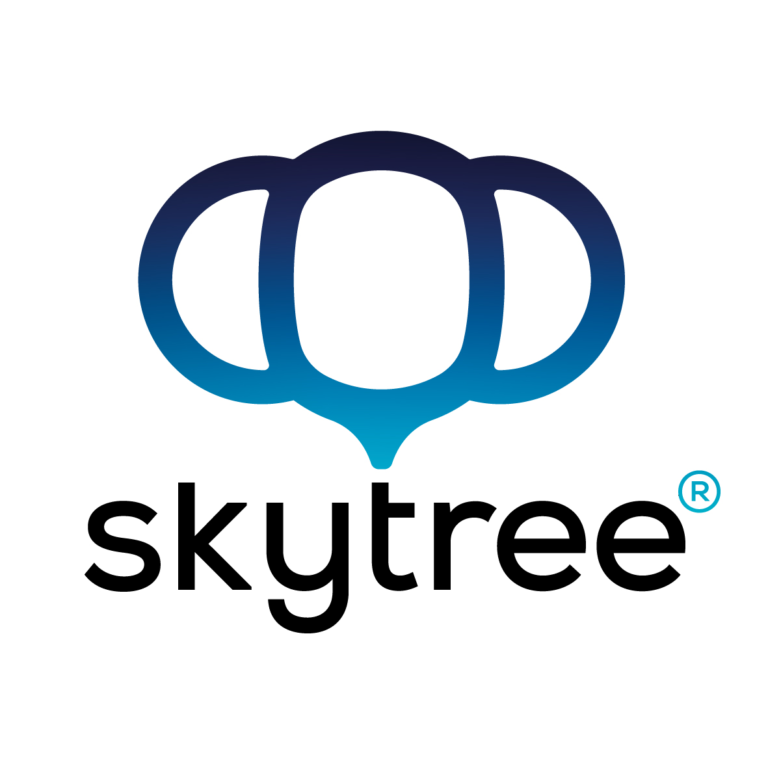
The direct air capture industry is undergoing a transformation that's reshaping how carbon removal companies stay profitable. With costs still above $500 per ton and policy uncertainty growing, DAC developers are racing to diversify beyond carbon credits alone. The shift is strategic, pairing atmospheric CO2 removal with everything from data center electricity to sustainable fuel production.
This isn't just survival mode. Companies are proving that carbon removal can support entirely new business models while scaling technology that the world desperately needs. The pivot comes at a critical moment when government funding faces scrutiny and the voluntary carbon market remains volatile.
>> RELATED: How Direct Air Capture Could Drop 75% in Cost

Why Pure Carbon Credit Models Face Pressure
Traditional DAC facilities remove CO2 but generate zero operational revenue on their own. Income flows entirely from selling verified removal credits, leaving companies vulnerable to market swings and shifting policies. The model worked when federal support seemed guaranteed, but recent changes have forced a rethink.
The U.S. government's 45Q tax credit remains in place, but broader funding cuts in early 2025 put $7.56 billion worth of clean energy projects under review. DAC developers who counted on predictable support now face questions about long-term viability. Companies are responding by building revenue streams that don't depend solely on climate policy.

Spiritus Launches Power Generation Platform
Spiritus made headlines in October 2025 by launching Orchard Power, a platform pairing natural gas turbines with point-source carbon capture and DAC technology. The system uses waste heat from power generation to drive carbon removal units, creating a dual revenue model. The first deployment will supply 1.5 gigawatts of firm power to a carbon-negative data center campus in Wyoming.
This approach gives Spiritus a steady income from electricity sales while removing atmospheric carbon. It's designed for AI companies needing massive power loads but also facing pressure to meet climate commitments. The New Mexico-based company recently raised $30 million in Series A funding led by Aramco Ventures, with backing from Khosla Ventures, Mitsubishi Heavy Industries America, and TDK Ventures.

"We're seeing soaring demand for data centers and heavy industries, yet we can't ignore the carbon that comes with it. Our DAC technology brings large-scale decarbonization within reach."
Charles Cadieu, CEO and Co-founder of Spiritus
The funding will support three major facilities, including a 1,000-ton pilot in New Mexico and the massive Orchard One project in Wyoming. Spiritus is targeting carbon removal costs under $100 per ton, a breakthrough that would make DAC commercially competitive. The company's sorbent technology captures CO2 passively without energy-intensive fans, then uses low-temperature desorption to release it.

>> In Other News: UN Endorses First Article 6.4 Carbon Credit Methodology
Climeworks Builds Portfolio Strategy
Climeworks, the Swiss DAC pioneer, took a different route by introducing Climeworks Solutions in 2024. The service combines DAC with other carbon removal methods including biochar, enhanced rock weathering, and bioenergy with carbon capture. Corporate buyers access multiple removal types at a blended, lower average cost.
In September 2025, Climeworks announced its largest portfolio deal yet with Schneider Electric, covering 31,000 tons of carbon removal credits through 2039. This approach helps maintain revenue while working to reduce DAC costs. The strategy acknowledges that diverse removal methods can serve different customer needs and price points.
Climeworks continues pushing technological boundaries with its Generation 3 DAC system. The new design cuts energy use by 50% while doubling CO2 capture capacity compared to earlier versions. Material lifetime increased threefold, and the company projects costs of $400 to $600 per ton net removal by 2030.

"You can't overstate the importance of rigorous testing before building. With this proof in hand, we can confidently say that our Gen 3 tech is engineered for real-world conditions and real-world impact."
Jan Wurzbacher, Co-CEO of Climeworks
Integration with E-Fuels Production
Other companies are integrating DAC with fuel production from day one. Aeon Blue, a Canadian startup, combines hydrogen production and carbon capture in a single saltwater electrolyzer. The system produces synthetic drop-in fuels while overcapturing CO2 for permanent storage.
For every ton of Aeon Blue's fuel produced, the company removes three tons of CO2 and prevents seven more by displacing fossil fuels. The first pilot facility in Nova Scotia is scheduled to begin operations in 2026. Revenue from fuel sales supports the carbon removal operation, creating a self-sustaining business model.
North American Companies Adding Coproducts
Several developers have built hybrid revenue models into their technology from the start:
- Avnos: Captures water alongside CO2 in its hybrid humidity DAC system, producing five tons of distilled water per ton of CO2 removed
- Greenlyte Carbon Technologies and Parallel Carbon: Both pair DAC with hydrogen production for dual revenue streams
- Skytree: Evolved from air purification to supplying CO2 and water for e-fuel projects
- Carbon Utility: Produces green hydrogen through electrochemical air capture
Why Timing Matters for This Shift
This business model evolution coincides with increased investor selectivity as the sector matures. Companies demonstrating multiple revenue streams are better positioned to secure financing and attract corporate buyers. Energy-intensive industries like data centers, aviation, and manufacturing want carbon removal paired with other services.
Federal funding uncertainty makes the case even stronger. Projects that generate income from established markets like electricity, hydrogen, or water can finance carbon removal operations more reliably. This financial stability enables faster deployment and continued technology improvement.
Key Hybrid Direct Air Capture (DAC) Models
| Company | Hybrid Model | Location |
|---|---|---|
| Spiritus | DAC + Power Generation | New Mexico/Wyoming |
| Climeworks | DAC + Portfolio Solutions | Switzerland (US expansion) |
| Aeon Blue | DAC + E-fuels | Nova Scotia, Canada |
| Avnos | DAC + Water Production | California |
Note: Hybrid models combine Direct Air Capture (DAC) with other energy or industrial processes for shared heat/power or enhanced product creation.
What This Means for Industry Scale-Up
This business model innovation represents the maturation of the carbon removal sector. Companies are moving beyond pure-play removal to become integrated climate solutions providers. They're recognizing that profitability requires serving multiple markets simultaneously, not waiting for carbon credit prices to reach break-even levels.
The hybrid approach addresses a fundamental scaling challenge. Revenue from products with established markets finances carbon removal operations more reliably than credits alone. This stability enables the rapid deployment and technology iteration needed to bring costs down to truly competitive levels.
As the industry evolves, expect more DAC developers to follow this playbook. Success will belong to companies balancing carbon removal with commercial viability, proving that climate action and profitable business aren't mutually exclusive. The integration of removal technology with existing industrial processes may be what finally unlocks gigaton-scale deployment.
Subscribe to the newsletter
Daily decarbonization data and news delivered to your inbox
Follow the money flow of climate, technology, and energy investments to uncover new opportunities and jobs.
Companies
Latest issues
-
Why Two Korean Giants Just Bet Big on US Wood Waste
Inside This Issue 🌲 Why Two Korean Giants Just Bet Big on US Wood Waste 🧪 Primary Hydrogen Identifies 8-kilometre Hydrogen Anomaly at Crooked Amphibolite Project in British Columbia 🚇 Carbon Captu...
-
This Tech Could Rewrite Hydrogen Economics
Inside This Issue ⚗️ ExxonMobil-BASF Partnership Signals Turquoise Hydrogen's Shift From Lab to Industrial Scale 🧱 API Endorses Use of Portland Cement in Carbon Storage Wells 🤝 CCME Engages at the...
-
Tech Breakthrough Turns Salty Waste into Carbon Gold?
Inside This Issue 💧 Ebb Partners with Saudi Water Authority to Transform Desalination Brine into Megaton-Scale CO₂ Removal 🏭 CO280 Successfully Completes Carbon Capture Field Pilot at a U.S. Pulp ...
Company Announcements
-
Getech, a world-leading locator of subsurface resources, has signed a Memorandum of Understanding (MoU) with HyReveal, a French deeptech startup expert in subsurface hydrogen and associated gases, ...
-
IonQ And Heven AeroTech Partner To Develop Quantum-Enabled Drones For National Security Applications
Partnership to integrate IonQ’s quantum technologies into Heven’s long-range, hydrogen-powered drone platform. IonQ’s investment will accelerate the development of quantum-enabled endpoints as it ...
-
Worthy's approach of marrying open-source science and practical tools for industry use Awards will accelerate development and deployment of trusted measurement, reporting, and verification tools n...
-
NW Natural and Modern Hydrogen Unveil Clean Hydrogen Production, Carbon Capture Project in Portland
Innovative methane pyrolysis technology, which is online at NW Natural’s Central Portland facility, produces clean hydrogen and captures solid carbon PORTLAND, Ore. (BUSINESS WIRE) -- NW Natural a...



